”
As a travel agent with over a decade of experience I’ve learned that creating an effective budget is crucial for running a successful travel business. Whether you’re just starting out or looking to optimize your existing agency managing your finances can make or break your venture.
I’ll share my proven strategies for developing a comprehensive travel agency budget that covers everything from operational costs to marketing expenses. Having worked with both small independent agencies and larger companies I understand the unique financial challenges that travel professionals face in today’s dynamic market. Understanding how to allocate resources efficiently while maintaining quality service isn’t just about numbers – it’s about building a sustainable business model that grows with your client base.
Key Takeaways
- Budget for travel agents typically include office space (25-35% of budget), technology systems ($500-800/month), and essential business insurance ($500-2,500/year)
- Marketing budgets should represent 15-25% of total expenses, with digital marketing requiring $1,500-3,000 monthly for small to medium agencies
- Personnel costs account for 40-50% of operational expenses, with senior travel agents earning $45,000-$65,000 annually plus benefits
- Strategic supplier partnerships require initial investments of $2,000-5,000, but can yield commission rates of 10-16% plus override bonuses
- Emergency funds should cover 3-6 months of operational expenses, with 25% of peak season profits allocated for off-peak periods
- Maintaining professional certifications and licenses costs $2,500-3,500 annually, including IATA, ARC, and CLIA memberships
Budget For Travel Agents
Budget for travel agents involves several essential cost categories that form the foundation of the business’s financial structure. I’ve identified the key operational expenses that require careful budgeting for sustainable agency management.
Office Space and Utilities
The physical location costs consume 25-35% of a travel agency’s monthly budget. My experience shows that a 500-square-foot office space in a mid-tier commercial area costs $1,500-2,500 monthly, plus utilities averaging $300-500. Remote work arrangements reduce these expenses by 70%, limiting them to home office deductions and basic utility allocations.
| Expense Category | Traditional Office | Remote Setup |
|---|---|---|
| Monthly Rent | $1,500-2,500 | $0-200 |
| Utilities | $300-500 | $50-150 |
| Insurance | $200-300 | $100-150 |
- Global Distribution System (GDS) access: $200-300 monthly for platforms like Sabre or Amadeus
- Customer Relationship Management (CRM): $50-100 per user for systems like Salesforce or HubSpot
- Booking management software: $100-200 monthly for platforms like Travefy or TravelWorks
- Cloud storage solutions: $15-30 monthly for secure client data storage
- Communication tools: $50-75 monthly for VoIP systems and video conferencing
- Cybersecurity protection: $75-100 monthly for data encryption and secure payment processing
Essential Business Insurance and Licensing Costs
Insurance and licensing form critical components of a travel agency’s budget, protecting both the business and clients while ensuring legal compliance.
Liability Insurance Coverage
Professional liability insurance costs range from $500 to $2,500 annually for travel agencies, depending on coverage limits and business size. I’ve identified three essential coverage types:
- General Liability Insurance: Covers physical injuries or property damage at $1M-$2M per occurrence
- Errors and Omissions Insurance: Protects against professional mistakes with coverage between $500K-$1M
- Cyber Liability Insurance: Safeguards client data with typical coverage of $250K-$1M
Professional Certifications
Budget for travel agents certification expenses vary based on credentials and renewal requirements. Here’s a breakdown of common certification costs:
| Certification Type | Initial Cost | Annual Renewal |
|---|---|---|
| IATA/IATAN ID Card | $165 | $130 |
| ARC Accreditation | $2,000 | $395 |
| CLIA Membership | $399 | $399 |
| State Seller of Travel License | $100-$500 | $50-$300 |
- Reduced booking fees through consortium partnerships
- Enhanced commission structures from suppliers
- Access to educational resources and training programs
- Legal compliance documentation for multiple jurisdictions
Marketing and Advertising Budget
Marketing expenses represent 15-25% of a travel agency’s overall budget, forming a critical investment in client acquisition and retention. Based on my experience managing travel agency budgets, I’ve identified the most effective allocation strategies for both digital and traditional marketing channels.
Digital Marketing Investments
Digital marketing requires a monthly investment of $1,500-3,000 for small to medium-sized travel agencies. Here’s a breakdown of essential digital marketing expenses:
| Digital Marketing Channel | Monthly Cost Range | Percentage of Marketing Budget |
|---|---|---|
| Social Media Management | $300-600 | 20% |
| SEO & Content Marketing | $400-800 | 25% |
| Email Marketing Platform | $150-300 | 10% |
| PPC Advertising | $500-1,000 | 35% |
| Website Maintenance | $150-300 | 10% |
Key digital investments include:
- Paid social media campaigns on Instagram Facebook targeting specific travel demographics
- Search engine optimization for destination-specific keywords
- Email marketing software for automated travel deal notifications
- Google Ads campaigns focused on high-intent travel search terms
- Website updates featuring new travel packages seasonal promotions
Traditional Marketing Channels
Traditional marketing typically consumes $500-1,500 monthly depending on agency size location. Essential traditional marketing expenses include:
| Marketing Activity | Cost Range | Frequency |
|---|---|---|
| Print Materials | $200-400 | Monthly |
| Local Events | $300-600 | Quarterly |
| Direct Mail | $150-300 | Monthly |
| Trade Show Participation | $2,000-4,000 | Annually |
- Printed brochures featuring luxury vacation packages
- Travel show booth rentals equipment
- Local newspaper travel section advertisements
- Partnership marketing with hotels airlines
- Branded promotional items for client gifts
- Community event sponsorships networking meetings
Staff and Training Requirements
Personnel expenses represent a significant portion of a travel agency’s budget, often accounting for 40-50% of total operational costs. Based on my experience managing agency budgets, strategic allocation of resources for staffing and professional development ensures optimal service delivery and team growth.
Employee Salaries and Benefits
Travel agency staff compensation varies by role and experience level, with specific salary ranges for each position:
| Position | Annual Salary Range | Common Benefits Cost |
|---|---|---|
| Senior Travel Agent | $45,000-$65,000 | $12,000-$15,000 |
| Junior Travel Agent | $35,000-$45,000 | $10,000-$12,000 |
| Administrative Staff | $32,000-$42,000 | $8,000-$10,000 |
| Sales Manager | $55,000-$75,000 | $15,000-$18,000 |
Essential employee benefits include:
- Health insurance with 70-80% employer contribution
- Paid time off starting at 10 days annually
- Travel industry perks including familiarization trips
- 401(k) matching up to 3% of salary
- Professional certification reimbursements
Professional Development Costs
Training investments maintain competitive advantage through enhanced service quality:
| Training Type | Annual Cost per Employee |
|---|---|
| GDS Training | $500-$800 |
| Destination Specialist Programs | $300-$600 |
| Sales Training | $400-$700 |
| Industry Conferences | $1,500-$2,500 |
- Monthly online training subscriptions at $50 per employee
- Quarterly skill enhancement workshops at $250 per session
- Annual industry certification renewals averaging $300
- Destination familiarization trips costing $2,000-$4,000 annually
- Leadership development programs at $1,500 per manager
Building Industry Partnerships
Strategic partnerships form the backbone of a travel agency’s revenue potential, impacting both service quality and profit margins. I’ve identified key areas that maximize partnership value while maintaining budget efficiency.
Supplier Relationships
Travel supplier partnerships require an initial investment of $2,000-5,000 for relationship development. I allocate funds for:
- Attending supplier training sessions at $200-500 per program
- Hosting supplier presentations at $300-800 per event
- Participating in familiarization trips at $1,000-2,000 per trip
- Maintaining consortium memberships at $500-2,000 annually
- Creating supplier-specific marketing materials at $300-600 per campaign
| Partnership Investment | Cost Range |
|---|---|
| Training Programs | $200-500 |
| Supplier Events | $300-800 |
| Fam Trips | $1,000-2,000 |
| Consortium Fees | $500-2,000 |
| Marketing Materials | $300-600 |
- Base commissions ranging from 10-16% for standard bookings
- Override commissions of 2-5% based on sales volume
- Bonus incentives of $500-2,000 per quarter for meeting targets
- Network affiliate fees of $1,000-3,000 annually
- Booking tool subscription costs of $50-200 monthly
| Commission Type | Percentage/Amount |
|---|---|
| Base Commission | 10-16% |
| Override Commission | 2-5% |
| Quarterly Bonuses | $500-2,000 |
| Network Fees | $1,000-3,000 |
| Booking Tools | $50-200/month |
Emergency Fund Planning
Based on my extensive travel agency experience, establishing an emergency fund safeguards against unexpected financial challenges while maintaining operational stability. A well-structured emergency fund equals 3-6 months of operational expenses.
Managing Seasonal Fluctuations
Travel agency revenue fluctuates significantly throughout the year, with peak seasons generating 40-60% more income than off-peak periods. I maintain separate accounts for peak season earnings, allocating 25% of high-season profits to cover operational costs during slower months. Here’s my recommended seasonal fund allocation:
| Season | Revenue % | Emergency Fund Allocation |
|---|---|---|
| Peak | 100% | 25% |
| Shoulder | 70% | 15% |
| Off-Peak | 40% | 35% |
Crisis Preparedness
My crisis preparedness strategy includes specific financial buffers for industry-related emergencies. I dedicate 10% of monthly revenue to a crisis fund that covers:
- Travel disruption compensation costs
- Emergency client repatriation expenses
- Natural disaster contingency amounts
- Temporary staff replacement fees
- Technology failure recovery costs
I structure the crisis fund with immediate access to 30% of the total amount while keeping 70% in higher-yield accounts. This approach maintains liquidity for sudden needs while maximizing returns on reserve funds.
| Crisis Fund Component | Allocation % | Access Timeline |
|---|---|---|
| Immediate Access | 30% | Same-day |
| Short-term Reserve | 40% | 7-14 days |
| Long-term Reserve | 30% | 30 days |
Building A Foundation For Sustainable Growth
Creating a robust budget for your travel agency isn’t just about crunching numbers – it’s about building a foundation for sustainable growth. I’ve seen firsthand how proper financial planning can make the difference between struggling and thriving in this dynamic industry.
With my decade of experience I can assure you that success comes from balancing operational costs marketing investments and emergency preparedness. A well-structured budget will help you navigate slow seasons adapt to market changes and seize growth opportunities when they arise.
Remember that your budget should evolve with your business. I recommend reviewing and adjusting your financial plans quarterly to ensure you’re making the most of your resources while maintaining a healthy profit margin.
“

